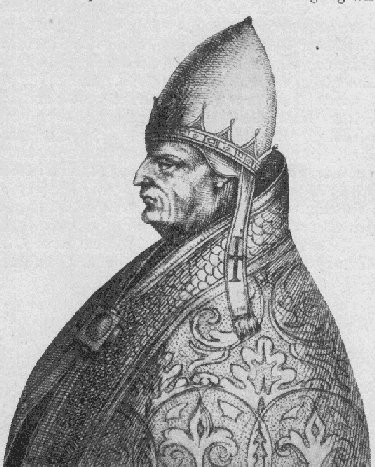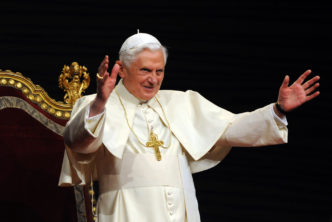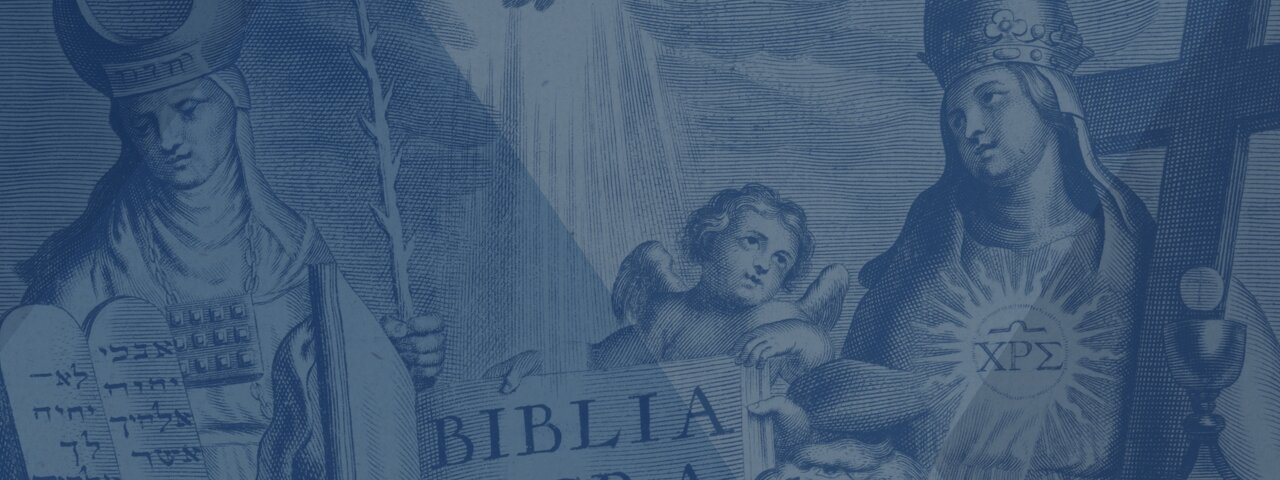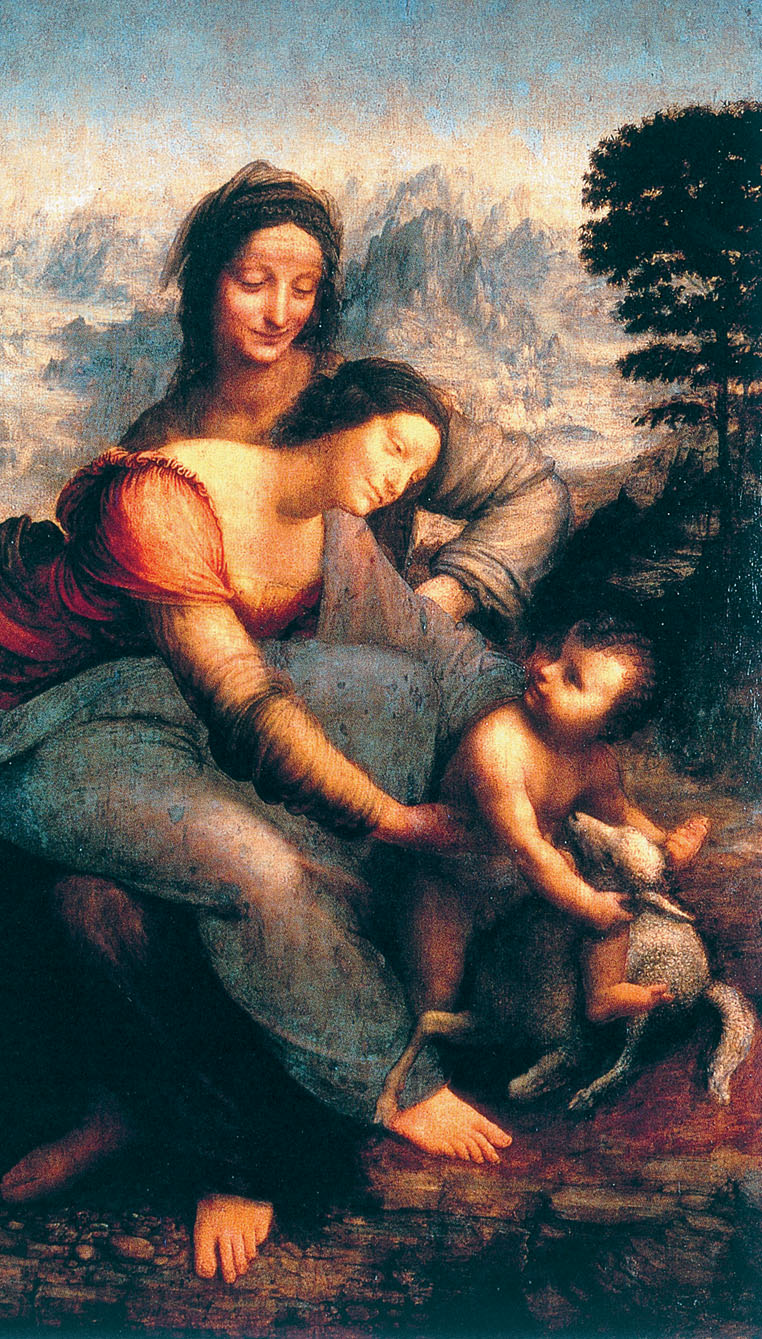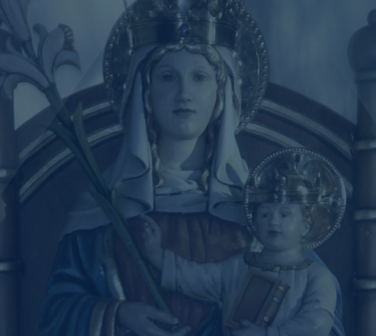II. The Crisis of the Eleventh Century—the Resignations of Benedict IX and Gregory VI
The second period in which we see papal resignations is the mid–eleventh century. In the ninth century, the papacy had separated itself from the then heretical Byzantine empire and had looked north to the Franks, crowning their king, Charlemagne, emperor of the west in 800. But Charlemagne’s empire did not long endure the monarch’s death, and by the year 900 it had virtually no presence in Rome. The papacy, therefore, entered a period of extremely local focus. The office had little jurisdictional or governmental authority outside the city of Rome, and had become an object of petty struggles between Roman aristocratic families. In 1032, one of these families managed to place a boy of about 17 on the papal throne, Pope Benedict IX.
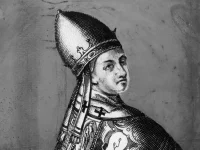 Benedict was not a good pope. By all accounts he was immoral and irresponsible, living a dissolute life (he was, nevertheless, orthodox in all his pronouncements). In 1044, a rival family overthrew Benedict and installed Sylvester III. Benedict’s faction, however, regrouped and re-took the city from Sylvester. There were now two papal claimants. Benedict’s uncle, Gratian, was so distressed by the scandal that he tried to persuade Benedict to step down. Apparently, the only form of persuasion that Benedict responded to was money, and so Gratian “bought” the papacy from him, becoming Pope Gregory VI. A short time later, Benedict decided that this sale had been a mistake and reclaimed his throne.
Benedict was not a good pope. By all accounts he was immoral and irresponsible, living a dissolute life (he was, nevertheless, orthodox in all his pronouncements). In 1044, a rival family overthrew Benedict and installed Sylvester III. Benedict’s faction, however, regrouped and re-took the city from Sylvester. There were now two papal claimants. Benedict’s uncle, Gratian, was so distressed by the scandal that he tried to persuade Benedict to step down. Apparently, the only form of persuasion that Benedict responded to was money, and so Gratian “bought” the papacy from him, becoming Pope Gregory VI. A short time later, Benedict decided that this sale had been a mistake and reclaimed his throne.
Now there were three claimants. By this time the power of the Western Empire, headed by Henry III, had re-established itself in the North and was in the process of major secular and ecclesiastical reforms. Outraged by the affairs in Rome, Henry intervened by calling a council. The council declared Benedict IX and Sylvester III deposed, while Gregory VI resigned on account of his simoniacal election. Pope Clement II, a favorite of the emperor, was then elevated to the papacy. But this was not the end of Benedict IX. When Clement II died in 1047, Benedict IX returned to the papal throne for a short time before being driven from Rome by the emperor and replaced with Damasus II. In all this mess, it is impossible to sort out valid resignations and valid elections. But we can certainly say that there were at least two papal resignations—both of which occurred under pressure and toward the end of eliminating corruption.
There were several interconnected problems that the Church was facing. First was the procedure for electing a new pope. The College of Cardinals didn’t exist yet, and the cardinals themselves were simply important members of the Roman clergy. The election of the pope proceeded in a largely ad hoc manner. A candidate was basically acclaimed by the clergy and people of Rome. In reality, of course, this lack of procedure opened the door for the corruption of secular politics to penetrate the whole electoral process. Furthermore, if the clergy and people acclaimed the pope, what happened when two groups of clergy and people acclaimed two different men? If this happened, when there were rivals for the throne, who was the judge? The emperor?
The reforming popes—starting with St. Leo IX (1049–54), who came in on the heels of the scandalous events of the mid–eleventh century—had been brought in from the North, from well outside the Roman milieu, by the German Emperor. They were to clean up Rome, and they set about doing so. But as much as they owed their position to the emperor’s power and agreed with him about ecclesiastical reform, they were extremely uncomfortable with his role in deposing and electing popes. The introduction of a power capable of judging the pope was not the solution to the Church’s problem.
 And so, in 1059, Pope Nicholas II issued an edict that established the cardinals of Rome as the papal electors. Their choice still had to be acclaimed by the clergy and people, and confirmed by the emperor, but only a candidate of their choice could become pope. This was rejected by the Germans as prejudicial to the rights of the emperor, and the Germans, attempting to operate according to the old “rules,” tried to depose Nicholas and replace him with another. This ushered a long period of conflict between the emperors and the Roman popes. Seven out of the next ten popes faced anti-popes.
And so, in 1059, Pope Nicholas II issued an edict that established the cardinals of Rome as the papal electors. Their choice still had to be acclaimed by the clergy and people, and confirmed by the emperor, but only a candidate of their choice could become pope. This was rejected by the Germans as prejudicial to the rights of the emperor, and the Germans, attempting to operate according to the old “rules,” tried to depose Nicholas and replace him with another. This ushered a long period of conflict between the emperors and the Roman popes. Seven out of the next ten popes faced anti-popes.
By the 1140s, this conflict ended with the victory of the reform party. Not only did the papacy retain control of itself; it could definitively assert control over the spiritual dimensions of the clergy throughout the Church, including the bishops. This was crucial to extending the reform movement out of Rome and throughout the Church, which became the program for the next 160 years. The resignations that occurred in this period were a part of the process of ending one way of doing things that was no longer congruent with the social reality and replacing it with another. This was a painful experience that resulted in decades of schism and even outright war.

